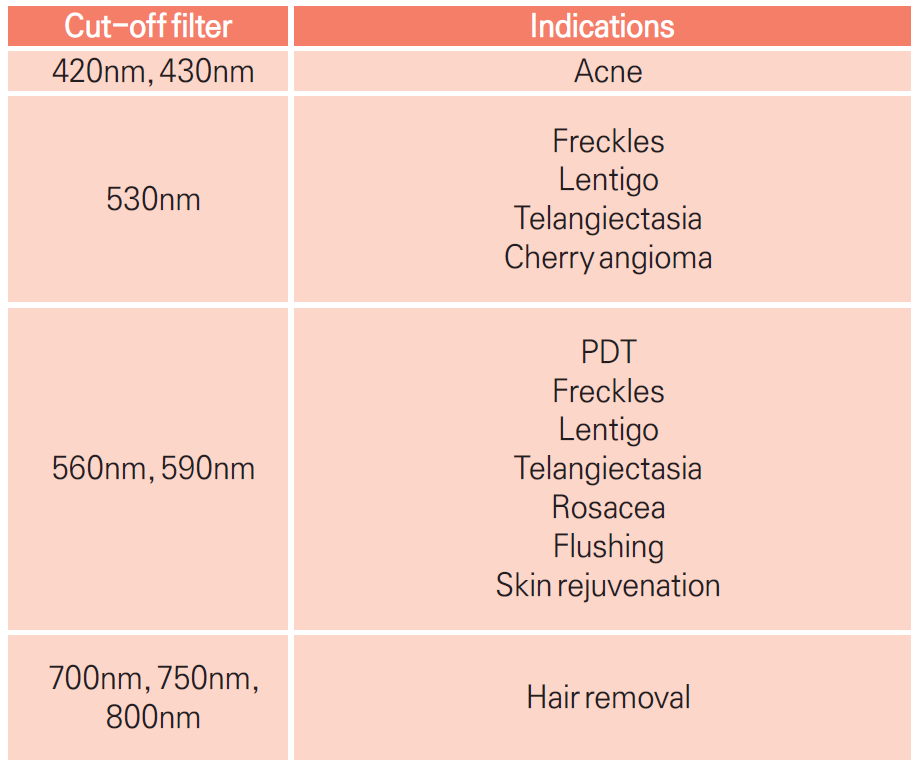
▶ Previous Artlcle : #17-3. IPL(Intense Pulsed Light)
The firstly developed IPL filtered the light source with wavelengths of 400 to 1200nm to provide a treatment fit for the purpose.
Since light had a lot of wavelengths of the infrared region, absorbance to water became high, and in turn, the photothermal effect on the dermal tissue was raised, thereby increasing the tissue regenerative effect.
[Advertisement] MAGNUM(Q-switched Nd:YAG Laser) – Manufacturer: (www.i-dana.com)]
However, the risk of burns to the epidermal tissue was also increased. ELLIPSE, an IPL product launched in 2002, was upgraded to reduce the risk of such superficial burns and enhance the safety of treatment with wavelengths of 400 to 950nm by filtering wavelengths up to 950nm or above so that energy of light could be more focused on the target lesions.
The majority of IPL products, including those made in Korea, launched afterwards, were designed to have light irradiated at wavelengths of only up to 950nm.
Therapeutic Indications of IPL
In the case of applying the IPL with a broad band spectrum to the target lesions, different therapeutic effects can be attained by selecting the cut-off filter with high absorbance for chromophores such as melanin and oxyhemoglobin and by setting parameters such as pulse duration, fluence, single pulse, and multi pulse.
Table 1. Indications of IPL.
-To be continued





















